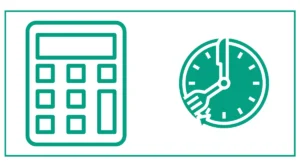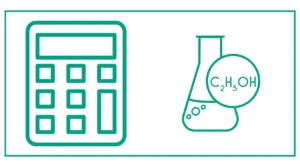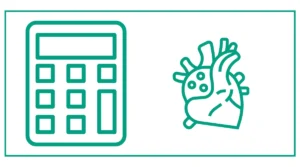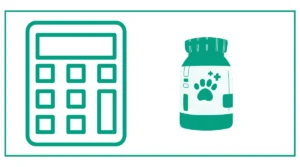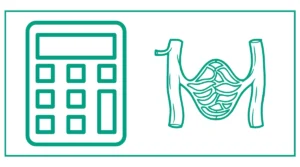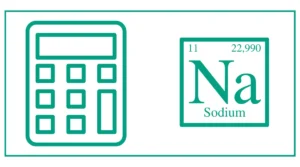The GSC calculator helps you find the Glasgow Coma Scale of your patient.
To calculate GSC, select one of the eye response options, i.e., does not open eyes, opens eyes in response to pain, opens eyes in response to voice, or opens eyes spontaneously.
Choose one of the verbal response options. These include whether the patient makes the sound, makes no sound, speaks words, looks confused or disoriented, or looks oriented and converses normally.
The motion response options include whether the patient makes no movements, extension to painful stimuli, abnormal extension to painful stimuli, flexion, localizes to painful stimuli, or obeys commands.
In case you do not know, the Glasgow Coma Scale (GCS) objectively measures consciousness in acute medical and trauma patients. The measure evaluates patients’ eye-opening, motor, and vocal responses.
The Glasgow Coma Scale has three components: best eye reaction (E), best verbal response (V), and best motor response (M) (M).
The response levels in the Glasgow Coma Scale components are scored from 1 for no response to typical values of 4 (Eye-opening response), 5 (Verbal response), and 6. (Motor response)
Hence, the overall Coma Score ranges from three to fifteen, with three being the worst and fifteen being the best.
You might want Fractional exertion of sodium or EtG time.
The Glasgow Coma Scale (GCS) is a widely used and essential tool in medical practice for assessing a patient’s level of consciousness. This calculator provides a simple and efficient way to determine a patient’s GCS score, which is crucial for evaluating the severity of brain injuries and guiding appropriate medical care.
Understanding the Glasgow Coma Scale
The Glasgow Coma Scale, developed by Graham Teasdale and Bryan Jennett in 1974, has become the standard method for assessing consciousness in patients with brain injuries. The GCS evaluates three components of a patient’s responsiveness: eye opening, verbal response, and motor response. Each component is scored individually, and the scores are then added together to provide an overall GCS score.
Eye Opening Response
The eye opening response is scored on a scale of 1 to 4:
- Does not open eyes
- Opens eyes in response to pain
- Opens eyes in response to voice
- Opens eyes spontaneously
Verbal Response
The verbal response is scored on a scale of 1 to 5:
- Makes no sounds
- Makes sounds
- Words
- Confused, disoriented
- Oriented, converses normally
Motor Response
The motor response is scored on a scale of 1 to 6:
- Makes no movements
- Extension to painful stimuli
- Abnormal flexion to painful stimuli
- Flexion / Withdrawal to painful stimuli
- Localizes to painful stimuli
- Obeys commands
How to Use the GCS Calculator
Using our GCS calculator is straightforward and efficient. Follow these steps to calculate a patient’s GCS score:
- Select the appropriate option for the patient’s eye opening response from the dropdown menu.
- Choose the option that best describes the patient’s verbal response.
- Select the most accurate description of the patient’s motor response.
- Click the “Calculate GCS” button to get the total GCS score.
The calculator will then display the overall GCS score, which ranges from 3 (lowest level of consciousness) to 15 (highest level of consciousness).
Interpreting GCS Scores
Understanding the meaning behind GCS scores is crucial for healthcare professionals. Here’s a general guide to interpreting GCS scores:
- Severe brain injury: GCS 3-8
- Moderate brain injury: GCS 9-12
- Mild brain injury: GCS 13-15
It’s important to note that these ranges are general guidelines. The interpretation of GCS scores may depend on various factors, including the patient’s age, medical history, and the specific circumstances of their injury.
The Importance of GCS in Clinical Practice
The Glasgow Coma Scale plays a vital role in several aspects of patient care:
- Initial Assessment: GCS provides a quick and standardized way to assess a patient’s level of consciousness upon arrival at a healthcare facility.
- Monitoring Progress: Regular GCS assessments allow healthcare providers to track changes in a patient’s condition over time.
- Communication: The GCS score offers a common language for healthcare professionals to discuss a patient’s neurological status.
- Prognosis: GCS scores can help predict outcomes in patients with brain injuries, although they should be used in conjunction with other clinical indicators.
- Research: The widespread use of GCS in clinical practice makes it a valuable tool for comparing outcomes across different studies and treatment protocols.
Limitations of the Glasgow Coma Scale
While the GCS is a valuable tool, it’s important to be aware of its limitations:
- Intubated Patients: Verbal response cannot be accurately assessed in intubated patients, which may affect the overall score.
- Eye Swelling: Severe facial injuries or eye swelling may prevent accurate assessment of eye opening.
- Hearing Impairment: Patients with hearing difficulties may not respond appropriately to verbal commands, potentially affecting their score.
- Language Barriers: Non-native speakers or those with language disorders may have difficulty with the verbal component.
- Spinal Cord Injuries: Patients with high spinal cord injuries may have limited motor responses, affecting their motor score.
Healthcare professionals should consider these factors when using the GCS and interpret results in the context of the patient’s overall clinical picture.
GCS for Pediatric Patients
The standard GCS may not be suitable for very young children who have not yet developed verbal skills or the ability to follow complex commands. For these patients, a modified version called the Pediatric Glasgow Coma Scale (PGCS) is often used. The PGCS adapts the verbal and motor responses to be more appropriate for infants and young children.
Using GCS in Emergency Medical Services
The Glasgow Coma Scale is an invaluable tool for emergency medical services (EMS) personnel. It allows for rapid assessment of a patient’s neurological status in the field, which can guide immediate treatment decisions and help determine the appropriate level of care needed.
EMS providers typically use the GCS to:
- Triage patients at the scene of an accident or medical emergency
- Communicate a patient’s status to the receiving hospital
- Monitor changes in a patient’s condition during transport
- Guide decisions about the need for advanced interventions, such as intubation
The Role of GCS in Predicting Patient Outcomes
Research has shown that GCS scores can be useful in predicting patient outcomes, particularly in cases of traumatic brain injury. Generally, lower initial GCS scores are associated with higher mortality rates and poorer functional outcomes. However, it’s important to note that GCS scores should not be used in isolation to predict outcomes. Factors such as age, mechanism of injury, and other physiological parameters also play crucial roles in determining a patient’s prognosis.
Improving Accuracy in GCS Assessment
To ensure accurate and consistent GCS assessments, healthcare providers should:
- Receive proper training on how to perform GCS assessments
- Use standardized stimuli for assessing pain responses
- Document the specific responses observed, not just the numerical score
- Reassess patients regularly and note any changes in their scores
- Consider factors that may affect the assessment, such as medications or medical interventions
References
- Jain S, Iverson LM. Glasgow Coma Scale. [Updated 2022 Jun 21]. In: StatPearls [Internet]. Treasure Island (FL): StatPearls Publishing; 2023 Jan-. Available from: ncbi.nlm.nih.gov/books/NBK513298/
- Teasdale, G., Maas, A., Lecky, F., Manley, G., Stocchetti, N., & Murray, G. (2014). The Glasgow Coma Scale at 40 years: standing the test of time. The Lancet Neurology, 13(8), 844-854.
- Sternbach, G. L. (2000). The Glasgow coma scale. The Journal of emergency medicine, 19(1), 67-71.
